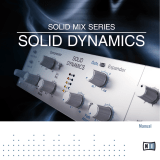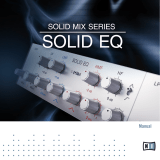
9
Depending on the host application implementation, the delay
compensation feature may not provide automatic
compensation when Duende PCIe plug-ins are inserted on
sends, groups, or buses. In this situation, the solution is to
manually compensate for the plug-ins.
These explanations of delay compensation apply primarily to
playback only.
Compensating for latency in Pro Tools LE and M-Powered
Because Pro Tools LE and M-Powered do not feature PDC it
must be done manually when Duende PCIe plug-ins are used.
Due to the nature of how signals are sent to and from Duende
PCIe, a latency is introduced which will delay any audio track,
aux input, master fader or instrument track by a specific
amount.
Tracks that use no Duende PCIe plug-ins or fewer than the
track with the most Duende PCIe plug-ins will need to be
delayed so that all tracks are in time. Because this latency is
reported by Pro Tools it is easily compensated for.
Here’s how:
The track with the most Duende PCIe plug-ins will introduce
the most latency, those with 1 or 2 plug-ins will introduce less
and those with no Duende PCIe plug-ins will introduce no
latency (providing other plug-ins that introduce latency are
not used).
To find out the latency introduced on a particular track by
Duende PCIe plug-ins, go to the channel in the mixer and
‘Command/Ctrl+Click’ twice in the green text below the fader
(normally showing vol). The value shown (dly) is the latency
introduced on that track in samples.
Now load the ‘Digidesign Time Adjuster Long’ plug-in on, for
example, a track with no Duende PCIe plug-ins. Double click
on the delay box and type in the latency value of the track that
has the most Duende PCIe plug-ins. The track with the most
Duende PCIe plug-ins and the track with none will now be
perfectly in sync on playback.
PDC No PDC
Steinberg Cubase 4
Steinberg Cubase SX 2 & 3
Steinberg Nuendo 2, 3 & 4
Logic Pro 7.1 or higher
Digital Performer 4.5 & higher
Pro Tools HD 7 or higher
Ableton Live 5 or higher
Cakewalk Sonar 5 or higher
Final Cut Pro
Soundtracks Pro
Garageband
Pro Tools LE and M-Powered





















